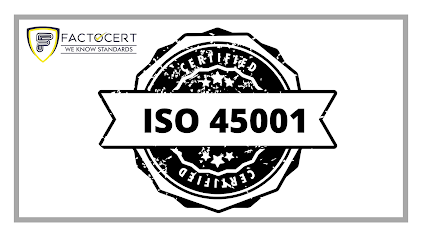Why is ISO 45001 Certification in Oman a Must for Manufacturing Companies?
ISO 45001:2018 is one standard you should put on your list of considerations for Occupational Health & Safety Management Systems (OHSMS). The need to control hazards in the manufacturing sector is a crucial component of occupational health and safety management. Occupational Health and Safety Management Systems can be designed in accordance with ISO 45001 requirements, a widely recognized management standard.
ISO standards for the manufacturing industry
Manufacturers have long used safety management systems due to the importance of worker safety. A number of safety management systems are hacked together to comply with legal requirements. A set of requirements aimed at improving occupational health and safety (OH&S) is contained in the ISO 45001 standard.
There are many aspects of occupational health that are covered by ISO 45001, and ISO's supporting standards provide guidance on implementation and other aspects of workplace safety. A quick search reveals 36 standards on the ISO website. Additionally, ISO/AWI 45002 provides additional guidelines for the implementation of ISO 45001, and ISO/DIS 45003 discusses safety and psychological health in the workplace. It also outlines a process for developing a safety signaling system, which is discussed in ISO/TS 20559:2020. These additional standards are not required by ISO 45001, but you can use them as guides for certain aspects of OH&S management.
Implementing ISO 45001 safety standards at your manufacturing organizations
There are several processes within ISO 45001 that are necessary for developing a quality OHSMS that goes beyond simply complying with legal requirements. ISO 45001 also helps reduce worker injuries and illnesses. Occupational health and safety management involves identifying all parties involved in occupational health and safety at your organization, as well as identifying risks and hazards. ISO 45001 can be used by any organization, regardless of their industry or location. In this way, the manufacturer is able to tailor the requirements to suit their own needs and address specific hazards related to their industry.
Starting with top-level management approval and support, ISO 45001 implementation should follow a systematic approach. As a next step, it is critical to understand your legal requirements, which will assist you in defining the scope of your OHSMS as well as the processes and procedures needed to implement it. The next important step is to implement the processes, including incorporating any existing processes you may already have in place, followed by training to ensure that all changes are incorporated into workers' daily actions. Finally, after implementing and maintaining OHSMS processes and records, you should use these processes to assess and correct the systems you have implemented. In this way, your management system can be certified.
It is important to systematically go over the requirements so that your unique manufacturing industry requirements are included and that the existing processes are leveraged.
Improve the manufacturing industry with ISO 45001
In order to remain successful, an organization must improve the OHSMS over time, in accordance with ISO 45001 standards. When your organization implements ISO 45001, it will be able to improve its processes. The implementation of a well-designed OHSMS can also ensure compliance with legal requirements as well as prevent employee turnover since you are creating a safe working environment for your employees. As a result of ISO 45001, you can enhance your credibility as well as give your business a better image.
For More Information: ISO 45001 Certification in Oman



.png)
Nice post. I learn something totally new and challenging on sites.
ReplyDeleteiso 45001 malaysia